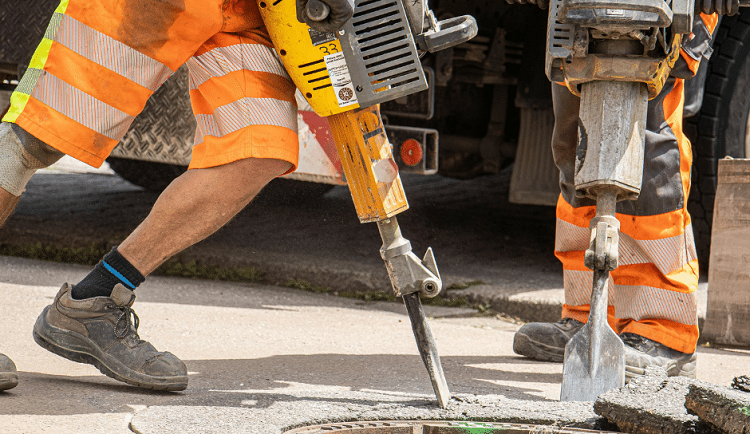The purpose of this standard work instruction is to assist in mitigating vibration hazards on a construction project site to minimize the risk of hand arm vibration syndrome.
Overall project HSE team is responsible for the implementation of this standard procedure.
Hazard Identification and Risk Assessment
Repeated exposure to high levels of vibration is potentially harmful and some workers may risk developing Vibration White Finger (VWF) or cause damage to arteries, nerves, bones and muscles leading to a painful condition known as Hand-Arm Vibration Syndrome (HAVS).
Risk Checklist
a) Regular work with tools and equipment, which generate high levels of vibration, for example:
i. Concrete vibratory pokers.
ii. Concrete vibratory tamping bars.
iii. Whackers.
iv. Pneumatic Hammers.
v. Pneumatic Drills.
vi. Hand Held Grinders.
vii. Concrete Breakers.
viii. Concrete Saws.
ix. Road Rollers.
x. Dumpers.
xi. Riveting Tools.
xii. Chainsaws.
xiii. Chipping Hammers.
b) Any job that causes tingling and numbness in a worker’s fingers after 5 – 10 minutes, or where the worker develops attacks of finger blanching, are best regarded as suspect.
Necessary Control Measures
a) Reduce vibration by choosing work methods and machines, which have a low vibration output.
b) Ask about vibration levels before deciding which tool or machine to select.
c) Can the job be done without using high vibration tools?
d) Select tools designed to minimize vibration.

e) Tools and equipment must be maintained in a good condition (anti-vibration pads/mounts checked regularly, worn parts replaced).
f) Ensure the right equipment is being used for the job.
g) Consider whether the job can be altered to reduce the grip and pressure that the worker needs to apply.
h) Ensure frequent work breaks to avoid long periods of continuous vibration exposure. (Rotation of Workers)
i) Enable workers to keep warm during cold weather by providing heating and suitable clothing such as gloves.
j) Provide workers with information and training on risks of vibration.
k) Teach workers ways of minimizing the risk through good working practices and keeping good blood circulation with exercises.
l) Inform workers how they can report the first signs of injury and who to.
Vibratory Hazards Checklist
Plant and Equipment
Can the job be done without using high vibration tools? If not:
i. Have vibration levels been enquired about when selecting the tool?
ii. Is the plant and equipment in good condition?
iii. Is it suitable for the purpose?
iv. Has it been well maintained?
v. Are anti-vibration pads, acoustic shields and silencers fitted properly and in good condition?
vi. Are “add on” items securely tightened?
vii. Mandatory Signs
Operator
a) Has the operator been made aware of the potential risks of vibration exposure and how to reduce them?
b) Has the operator been provided with the appropriate protective clothing?
c) Is the operator trained and competent in the use of the machine?
d) Does the operator know who to inform should they suffer vibration-induced symptoms?
e) Is the operator carrying out routine daily maintenance checks on the machine?
f) Are regular breaks from the vibration exposure being taken?
Relevant Records
Vibration exposure Log